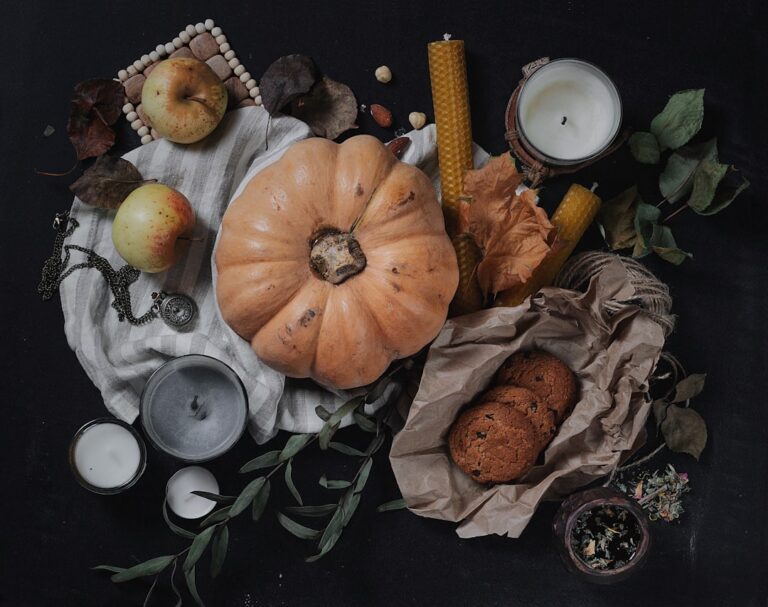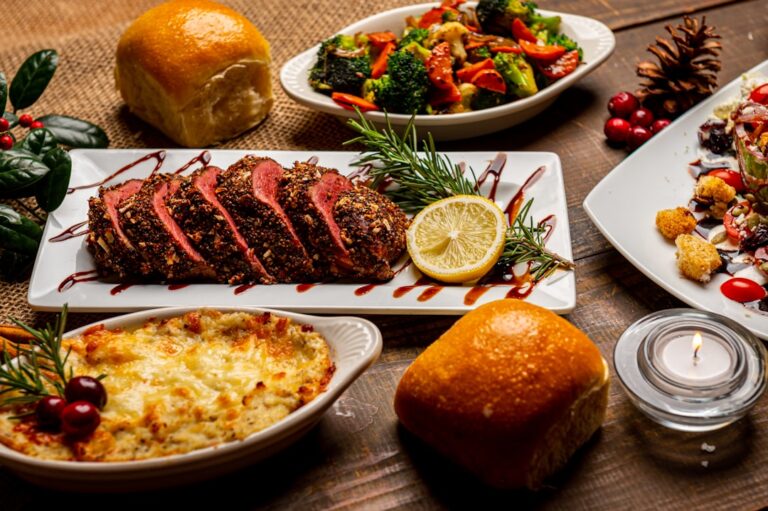A Comprehensive Look at the Oddities of Thanksgiving Thanksgiving is a time for family get-togethers, feasting, and giving thanks, but it also brings with it a wealth of odd facts that can take even the most seasoned holiday fans by surprise. While most people consider Thanksgiving to be a single day of feasting, the Pilgrims and Native Americans celebrated their harvest with a three-day festival full of games, food, & friendship in 1621. Did you know that the first Thanksgiving lasted three days? Need Weekly Trivia Questions? https://cheaptrivia.com/products/weekly-trivia-subscription-service
Key Takeaways
- The first Thanksgiving lasted for three days and was attended by 53 Pilgrims and 90 Native Americans.
- Thanksgiving was not declared a national holiday until 1863, when President Abraham Lincoln made it official during the Civil War.
- Turkey was not the main dish at the first Thanksgiving; it is believed that venison and seafood were the primary proteins.
- Black Friday, the day after Thanksgiving, is the busiest shopping day of the year in the United States.
- In Japan, KFC is a popular Thanksgiving meal, thanks to a successful marketing campaign in the 1970s.
A modern dinner usually lasts only a few hours, so this prolonged celebration was a far cry from that. The custom surrounding the Thanksgiving turkey is more complicated than it first appears, which is another fascinating fact. Although turkey has come to represent the holiday, the original Thanksgiving meal included other foods as well. Seafood, poultry, and venison may have also been served, according to historical accounts. Instead of concentrating only on turkey, the Pilgrims probably ate a range of foods, including wildfowl like ducks and geese.
The wide range of food options available to early settlers and their Native American counterparts is reflected in this rich tapestry. Uncovering the Past with Little-Known Thanksgiving History The story of Thanksgiving is often reduced to a story of Native Americans and Pilgrims eating together, but there are many facets to this tale that are frequently ignored. For example, the origins of the holiday can be found in the numerous harvest festivals that were observed by various cultures long before the Pilgrims came to America.
Through rituals and feasts that celebrated the earth’s blessings, Native American tribes had their own ways of expressing gratitude for abundant harvests. Also, Thanksgiving wasn’t always observed on the fourth Thursday in November. President Abraham Lincoln actually declared the final Thursday of November to be a day of “Thanksgiving & Praise to our beneficent Father who dwelleth in the Heavens” by declaring it a national holiday in 1863, during the Civil War. The current date was not set until 1939, when Franklin D.
Roosevelt pushed it to the second-to-last Thursday in November to prolong the holiday shopping season. Before Congress formally declared the fourth Thursday to be Thanksgiving in 1941, this change caused a great deal of controversy & confusion among the states. Unexpected Thanksgiving Food Facts: More than Just Turkey The first thing that probably comes to mind when you think of Thanksgiving dinner is turkey. Some unexpected facts about this well-known bird, though, might alter your viewpoint. For example, did you know that every year around 46 million turkeys are eaten during Thanksgiving?
This astounding figure shows how essential turkey has become to the identity of the holiday. Curiously, a growing trend toward a more varied diet is evident in the fact that many families also choose alternative proteins like roast beef or ham. Thanksgiving meals must include side dishes in addition to the turkey. It may surprise you to learn that mashed potatoes are frequently regarded as the most popular side dish, even more so than stuffing. Nearly 90% of Americans share mashed potatoes on their Thanksgiving table, according to surveys.
Rich turkey & gravy flavors are complemented by this creamy staple, which has grown to be a popular comfort food. In addition, the history of cranberry sauce, which many people take for granted, is intriguing. Native Americans utilized the tart fruit for therapeutic purposes long before it was a Thanksgiving table mainstay.
Despite the fact that many families follow the traditional Thanksgiving rituals, such as watching football or sharing their blessings, there are some unexpected customs that give the holiday a distinctive flair. On Thanksgiving morning, some families participate in “Turkey Trot” races, for instance. Because they allow participants to burn off calories before indulging in their festive meals, these fun runs have grown in popularity throughout the United States. The custom gives the day a sense of excitement while fostering community spirit & good health. Giving back to those in need or volunteering is another surprising tradition.
Many families decide to donate food to nearby food banks or serve meals at shelters for a portion of Thanksgiving. In a time when many people are preoccupied with abundance, this practice not only cultivates an attitude of thankfulness but also highlights the value of compassion & community. Families make enduring memories that go beyond their own tables by integrating deeds of kindness into their festivities. Unconventional Thanksgiving Customs: Breaking the Mold As society evolves, so do our customs surrounding holidays like Thanksgiving. Certain families have adopted unusual customs that are consistent with their beliefs & way of life.
In recent years, for example, “Friendsgiving” has become more and more popular as a means for friends to get together and celebrate, frequently prior to or following customary family get-togethers. This unofficial event gives people the chance to establish their own special customs while savoring delicious food and companionship. Also, some people have completely chosen non-traditional menus.
Sushi platters or vegan dishes may be served at some homes in place of turkey and stuffing. This change is a reflection of the cultural influences and shifting dietary preferences that have impacted American culture. Adopting unusual traditions allows families to design unique experiences that suit their values & preferences. Enchanting Thanksgiving Folklore: Myths & Legends Thanksgiving’s history is enriched with a wealth of folklore. The “first Thanksgiving,” which is frequently idealized as a peaceful assembly between Pilgrims and Native Americans, is one well-known myth. A more nuanced relationship characterized by both collaboration and conflict is revealed by historical accounts, though.
The tale serves as a reminder of how crucial it is to comprehend history from a variety of angles. An additional intriguing folktale concerns the “Thanksgiving Day Parade” legend. Since its inception in 1924, the Macy’s Thanksgiving Day Parade has grown to become a legendary occasion. With live animals from Central Park Zoo, it was first planned as a Christmas parade to kick off the holiday season. It gradually developed into a magnificent show with intricate floats and enormous balloons that enthralled spectators all over the country.
Traditions can evolve and change over time while maintaining their essential qualities, as demonstrated by this change. Strange Thanksgiving Superstitions: Views and Customs Holidays are frequently accompanied by superstitions, & Thanksgiving is no different. One oddball belief is that whoever finds the larger piece after dissecting a turkey’s wishbone with someone else will be lucky for the upcoming year. This custom originated in antiquity, when people thought birds had divine attributes. Through time, the wishbone ritual has evolved into a delightful Thanksgiving meal activity for families.
The belief that spilling salt during dinner portends bad luck, unless you toss a pinch over your left shoulder to ward off bad luck, is another superstition. Even though this superstition may not be specifically related to Thanksgiving, it frequently creeps into holiday get-togethers where dining tables are set with salt shakers. These peculiar beliefs make the holiday more whimsical & enjoyable while promoting lighthearted conversation among family members. Unusual Thanksgiving Celebrations: Distinctive Methods to Remember the Day Even though family dinners and traditional feasts are the norm for Thanksgiving celebrations, some communities have created distinctive ways to remember the holiday. For example, in some towns, people come together to celebrate “Thanksgiving Day parades” that include floats, marching bands, and community performances.
These gatherings offer amusement for people of all ages while promoting a feeling of solidarity & pride. In addition to parades, some areas host “Thanksgiving festivals” that feature live music performances, craft fairs, and food tastings to highlight local culture. Attendees can enjoy a variety of culinary options while honoring the heritage of their community during these festivals. People can embrace the spirit of thankfulness & make enduring memories by taking part in these unusual celebrations.
Unusual Thanksgiving History: The Foundations of Custom The history of Thanksgiving is frequently veiled in myth and confusion. One peculiar feature is that some historians contend Thanksgiving is not just an American invention but may have originated in ancient European harvest festivals. Many European cultures observed these holidays long before the Pilgrims arrived in America.
These customs came together to form what is now known as Thanksgiving. Also, some scholars propose that early settlers might have modified Native American customs to suit their own cultural setting after being inspired by them. This blending of traditions demonstrates how customs change over time as a result of adaptation & cultural exchange. Your appreciation of the holiday’s rich history can be enhanced by learning about these strange beginnings. Unusual Thanksgiving Symbols: The Significance of Typical Icons Thanksgiving is full of symbols that have deeper meanings than just their outward appearance. For instance, pumpkins are frequently connected to fall harvests and represent wealth and success.
During this festive season, they are commonly used in dishes & decorations as a reminder of nature’s abundance. Cornucopia, sometimes referred to as the “horn of plenty,” is another unusual symbol. Throughout history, this conventional symbol has stood for sustenance and plenty. Frequently shown brimming with produce, it acts as a visual reminder to be thankful for the blessings of nature during harvest season. Knowing the meanings behind these symbols will help you incorporate them into your celebrations and enhance your Thanksgiving experience.
Unusual Thanksgiving Rituals: Creating Lasting Memories Rituals play an essential role in shaping our experiences during holidays like Thanksgiving. Even though many families follow standard customs like breaking bread or expressing gratitude, some decide to add unique rituals that produce enduring memories. Some families, for example, have started “gratitude jars,” in which each family member writes down something for which they are grateful each year, & they read them out loud at dinner. Making themed tablescapes or decorations based on individual hobbies or family history is another unusual custom.
Families are able to celebrate their unity on this unique occasion while expressing their individuality thanks to this innovative approach. You can make your Thanksgiving celebration genuinely unique while fostering deep relationships with loved ones by adopting unconventional customs like these. Thanksgiving is a rich tapestry woven from history, culture, and individual experiences; it is more than just a day for feasting, to sum up. You can develop a deeper understanding of the significance of this holiday while making treasured memories with loved ones by learning about its peculiar origins, oddball symbols, surprising culinary facts, unexpected traditions, unconventional customs, folklore, superstitions, unusual celebrations, odd origins, and unusual rituals.
Therefore, as you assemble around your table this year, surrounded by delectable food and loved ones, pause to consider everything that makes this holiday so exceptional.
If you’re looking for more ways to engage your patrons with Thanksgiving trivia, you may want to check out this article on the best scoring systems for Thanksgiving trivia. This resource can help you create a fun and competitive atmosphere for your holiday event. Additionally, you can also explore the Thanksgiving trivia questions and answers printables for bars to enhance the experience for your guests. Planning ahead for future holiday events? Consider the Thanksgiving trivia 2024 plan to stay ahead of the game.
GRAB YOUR FREE HOLIDAY TRIVIA PACKS
FAQs
What are some surprising Thanksgiving quiz topics?
Some surprising Thanksgiving quiz topics could include the history of Thanksgiving, little-known Thanksgiving traditions, famous Thanksgiving foods, and Thanksgiving trivia from around the world.
How can surprising Thanksgiving quiz topics wow patrons?
By incorporating unexpected and interesting Thanksgiving quiz topics, patrons can be engaged and entertained in a new and unique way. It can also spark conversations and create a memorable experience for patrons.
What are some examples of little-known Thanksgiving traditions?
Little-known Thanksgiving traditions could include the Canadian Thanksgiving celebration, the National Dog Show that takes place on Thanksgiving Day, and the tradition of pardoning a turkey by the President of the United States.
What are some famous Thanksgiving foods that could be included in a quiz?
Famous Thanksgiving foods that could be included in a quiz are turkey, stuffing, cranberry sauce, pumpkin pie, sweet potatoes, and green bean casserole.
What are some examples of Thanksgiving trivia from around the world?
Thanksgiving trivia from around the world could include the harvest festivals of different cultures, similar celebrations to Thanksgiving in other countries, and the history of giving thanks in various traditions.






